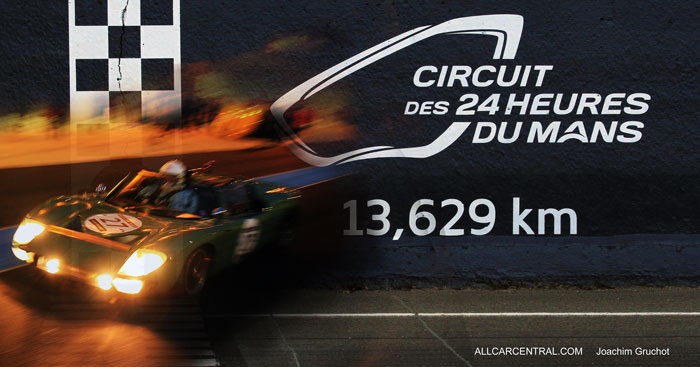
Question...What American car won the European Le Mans and when? It's an interesting question that I guarantee few readers of this publication will know simply because it's something that happens outside of the American motor racing world...Most of you will know about the achievements at Watkins Glen or on the famous brick track at Indy which is understandable but as the Le Mans is an truly international event with competitors from all over the racing world competing. The fact that the same American car under the Ford banner won, not once but twice and was placed no less than four times is not well known this side of the pond.
For those who don't know, the Le Mans is a twenty four hour race held in Europe each year, the course is tough by any standards.
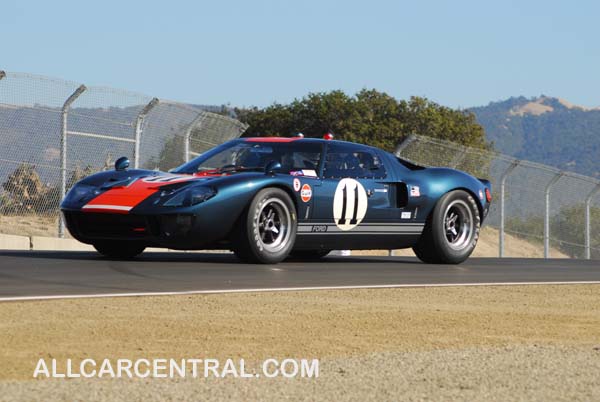
True to the spirit of the American motor industry in, 1966 Le Mans the Ford GT40 took the first second and third places (In its class) in the race. The following year a Ford GT 40 took the top honors beating a Ferrari team who were expected to win. During its production period a total of 126 Ford GT's were built. Having proved that America could produce an international race car Ford sold the production of the GT40 to Gulf Oil who in 1968 and 1968 drove to victory again at Le Mans. In total the GT40 took first place each year from 1966 through to 1968 a record that has yet to be equaled. Without hesitation I would certainly put this car on my list of classic vehicles.
Ford Mustang
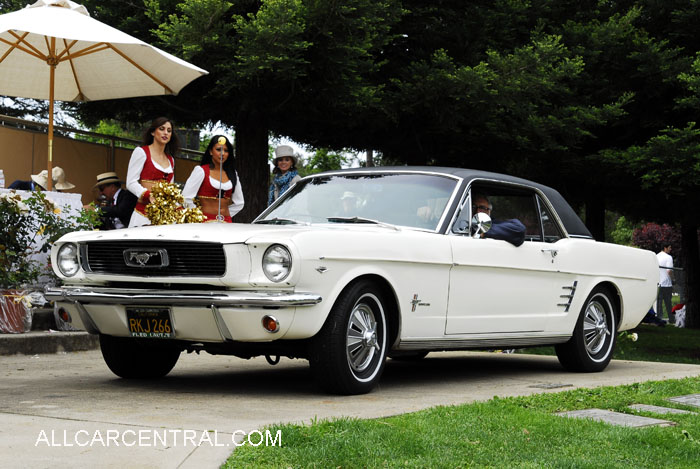
Next question...What production car sold over two million in the first two years of its life? Let me give you a clue, it's another Ford... Here is another clue it's still in production and is in its sixth version.
Originally designed as a two seated sports car it developed into a two door hard top coup. Introduced at the 1964 World Fair in New York the car was an instant hit selling a total of 22,000 orders on the first day. The man behind this success was Ford Vice President Lee Iacoca who went on to become a leading figure in the American Motor Industry.
The only other car that was virtually sold out on its first day of display was the Jaguar 120 back in 1949 when the total year's production was ordered before the end of the first day of the London Motor Show.
Back to the Ford; Obviously the Model T was certainly a classic and its young brother the Model A is certainly in that same group. What's is not generally known is that Ford was the first American Motor Company to invest in overseas production plants, and the first was in the United Kingdom. Equally impressive was the fact that the Ford management allowed these overseas ventures to develop their own style of vehicle with the understanding that they always used a Ford power train which in some situations caused problems.
A good example was the post war Ford known as the Pilot, based on an American prewar popular family car but featuring a large V Eight Ford engine. At the time in the post war world, gasoline was in short supply and rationed in most of Europe and that was certainly the case in Britain. To offer a large not very economical new car to a waiting public eager to buy any means of private transport but restricted to an average of four gallons of fuel each week was not a good idea.
Regretfully the car, through no fault of its design etc., was a complete dud in the overseas markets... This I suspect ,convinced Ford that the individual manufacturing plants in Britain Australia, Canada and later Germany should be allowed to built cars and power trains that they knew would sell in their market and of course they did with considerable success.
Jaguar 3.8 Mk II sedan 1967
Submitted by
Rick Feibusch, 2009
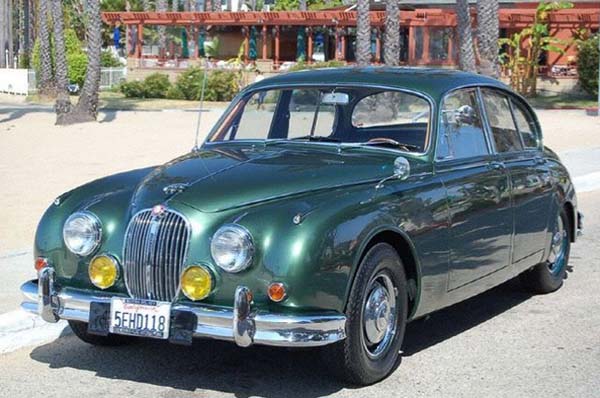
I have been a Jaguar fan for the past fifty years and have owned a few during that period even when British Leyland took over the company and produced rust bucket junk masquerading under the name of Jaguar. Thank goodness things improved when Ford took control and returned to the quality and style of the breed. Today the company has another new owner who seems to wish to recreate the splendor of the past. My first Jaguar was in 1967 a second hand MK II that I consider the most classic car of that breed, you had the choice of a two point four engine or the larger, proven on the race track, three point eight liter.
I have to say that fuel consumption was not a strong feature in the sales manual but comfort and performance was! The three point eight was favored by the British Police and of course the villains who robbed banks etc. . . .Zero to Sixty in nine seconds with a top speed in excess of 120 MPH. the major problem with Jaguar was that it was under financed and often existed year by year on current sales with little or nothing in reserve. The sticker price of the MK II was $4,566 off the showroom floor that's why over 100,000 were sold during the production period...The fact that the car was at least $1200 less than any comparable model with less performance and style helped the situation.
A Jaguar F Type and a Cheetah
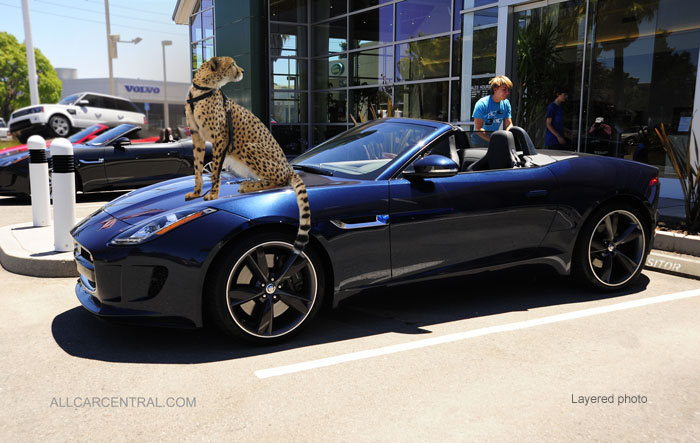
There is an interesting story about the choice of name, back in 1935 when the company was looking for a better image than SS representing the name Swallow Sidecars who were manufacturing these cars. On a summer holiday visit to the local Zoo by the owner of the company with his daughter she mentioned that in the zoo catalogue the Jaguar was listed as the fastest animal alive. This convinced the owner to call the new car by that name. (However, in reality that was not correct, that title belongs to the cheetah but I guess you can't call an item you are selling to the public a cheetah!) After the war the term SS was dropped for obvious reasons! With your indulgence I will place the Jaguar Mk II in my list of truly classic cars and by the way the E Type also deserves strong consideration.
There are some classic cars that regretfully were not embraced by the buying public an example that has always fascinated me was the rare Kaiser Darrin.
Kaiser Darrin 1954
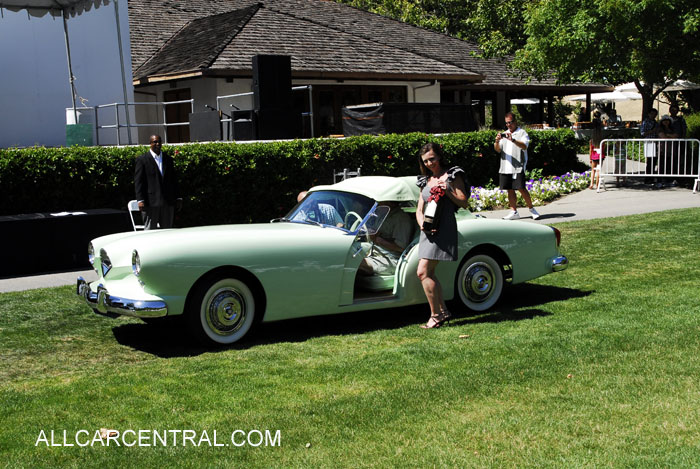
Offered to the public in 1954 after a merger with Willys. Only 435 were built but today this car is a high line collector's item. I have only seen two and by any standards they are impressive. As you may know Kaiser made ships before deciding to enter the post war car market.
A similar situation took place in Britain when a leading aircraft manufacturer decided to do the same thing. The year 1946 and the car the Bristol 400 built to the high standards that Bristol applied to its production of Aircraft. This had to be one of the first new British cars available so soon after the war ended. True to its claim the 400 was a work of engineering skill to be followed by the 401 a year or so later. The frame of the car was developed on the aircraft principle; it was tubular in construction giving the car a strong base for the body panels to be attached. The total production was extremely labor intensive in much the same way that aircraft were built. Production never exceeded three cars a week which made the car even more desirable. As to be expected the price was in line with the quality of the car at around $12,000 based on the exchange rate at the time.
Bristol 401 1953
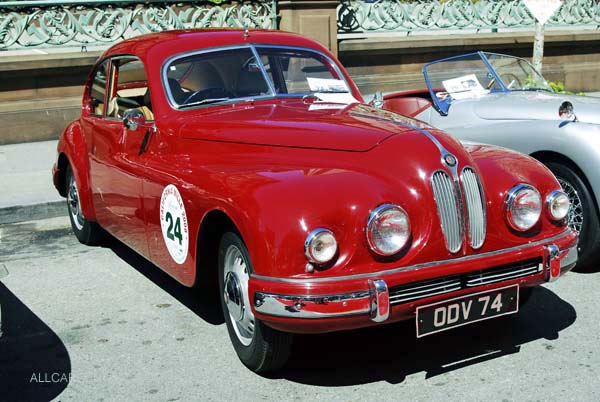
Production period for the 401 1949 through to 1953 to be followed by other Bristol vehicles based on the same standard. Fortunately the company still had a successful aircraft company so there was no real pressure to increase production or reduce the quality. Those that ended up in the USA were considered equal to the Rolls or the Cadillac when both of these manufacturers were in their prime.
Let me close with a car that set a new standard of performance, design and appeal. Again not cheap but desirable by most red blooded drivers, male or female. When I tell you that only 200 of these cars were produced and were sold to selected customers by the company, selected because they had a unique connection with the Porsche Company.
Porsche 959 Prototype
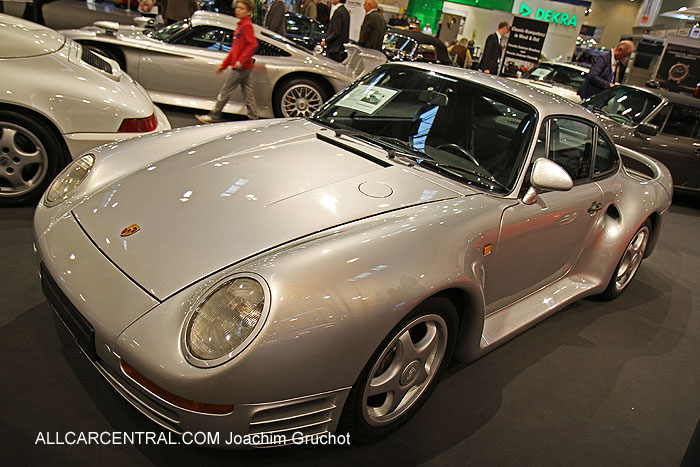
The car, the Porsche 959. Production from 1986 to 1990. Price to those selected owners $225,000 (Today if you could find one for sale around a million.) Performance...a few miles an hour below two hundred MPH. (With a tail wind I have no doubt that you could make two hundred.) The power is listed as 450 BHP from a six cylinder twin turbo. One of the many unique features of the car was the ability to raise and lower the car to selected heights. The car would automatically lower itself as the speed increased. Also there were computer controlled dampers that calculated the amount of power that should be distributed to each wheel at various levels of speed. My first reaction is one of admiration for such features twenty five years ago...My second is how much the repair bill would be when something went wrong! I am not quite sure if I can call this car Classic in the true sense of the term but it's certainly unique, rare and desirable.
Geoff Wheatley
The Porsche 959 is an interesting car from several points. It was Porsches first 4WD car. It was not approved for sale in the US as Porsche would not crash test one and the US would not accept computer generated crash results. There were actually 3 models made. The road car, the off-road/Rally car, and the racecar called Type 961.
Two 959 Rally cars, with the complex electronic systems removed, finished 1-2 in the most grueling Paris-Dakar Rally in 1986.
The 959/961 ran in the 1986 24 Hours of Le Mans. Driven by René Metge and Claude Ballot-Léna finishing first in its class and 7th overall.
The Porsche 959 created some interesting history in the US. Bill Gates and Microsoft co-founder Paul Allen each imported 959's as did Porsche collector Jerry Seinfeld. Gates' 959 was locked up for13 years by the Customs Service at the Port of Seattle, until regulations were changed to allow "Autos of Interest" to be imported with severe limitations on their use. Gates and Allen both helped pass the "Show and Display" law. Ed.
Porsche 959 rally car.................................................... ... Porsche 961 1986
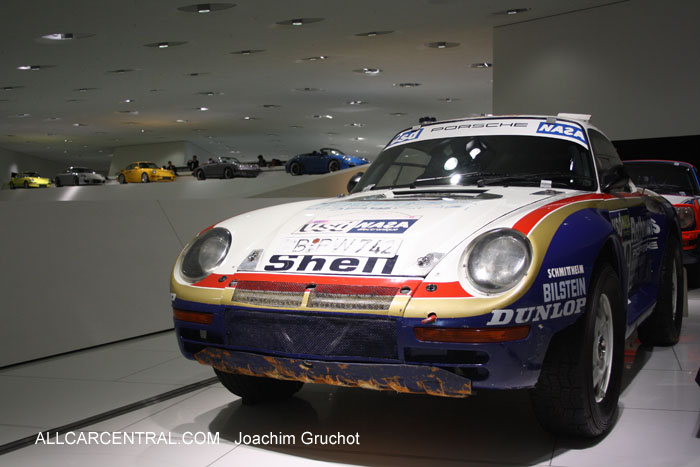
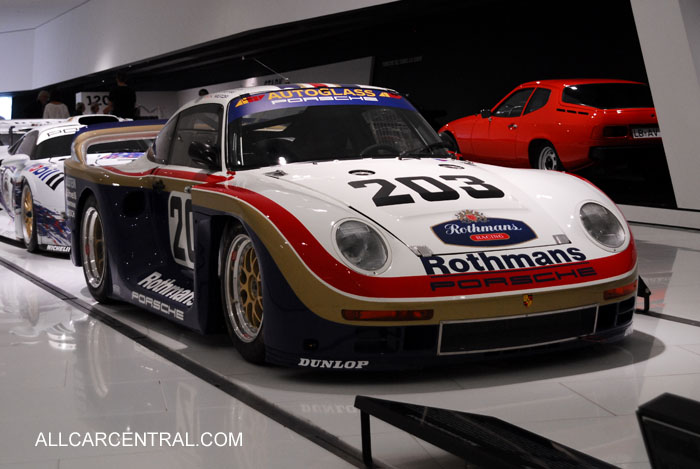

BACK TO TOP